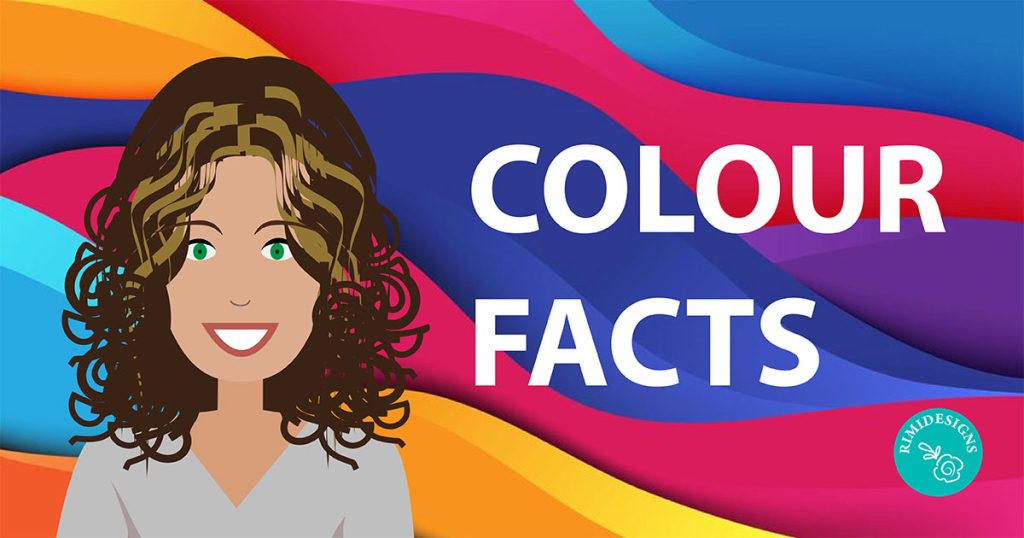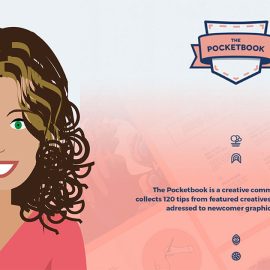
22 Intriguing Colour Facts
Colours are everywhere. From our favourite shoes and clothes to the wonders of nature and outer space. Everything has a colour to represent. Colour pretty much existed ever since the whole universe began and plays a part in everyone’s daily life. But how much do you really know about colours?
Let’s dig in a little deeper into the fascinating world of colours and discover interesting colour facts that are worth knowing.
1. And the world’s most popular colour is…
According to various international studies, the world’s most popular colour is blue. Based on the survey conducted by several global marketing firms, they’ve concluded that people worldwide picked blue (40%) as their favorite colour, followed by purple (14%). Though some researchers also suggest that red and green are a close second and third respectively.
White, orange and yellow are some of the least favourite colours.
2. Red is the first colour a baby sees
Recent studies have shown that infants as young as 2 weeks of age can already distinguish the colour red. Probably because red has the longest wavelength among colours, making it the easiest colour to process by the developing receptors and nerves in the baby’s eyes.
3. Men and women see the world differently
She sees crimson, burgundy and tomato red, while he sees red. Reuters reports that researchers from Arizona State University in Tempe have determined there is a gene that allows us to see the colour red, and that gene comes in a high number of variations.
Because the gene sits on the X chromosome — and women have two X chromosomes and so two copies of this gene, compared with only one for men — the gene aids women’s ability to perceive the red-orange colour spectrum.
Also, in general, women are better at differentiating between close range of colours, while men are better at recognising fine details in a moving object.
4. Anger management issues? Use pink
Pink is the palliative colour. Apparently, it suppresses anger and anxiety due to its calming effect. That is why prisons and mental health care institutions paint their walls pink to control the behaviour of those out-of-control prisoners and patients.
5. Avoiding vehicular accidents? Choose white
The safest car colour was determined to be white. Based on studies, it is the most visible colour under all conditions except snow. Though surprisingly, lime-yellow is the most visible colour on the road. But being an unpopular choice for a car colour, white is a more practical choice.
Silver is a close second and could have been a top choice for its invisibility during heavy rains and fogs.
6. Yellow + red = hunger
No wonder fast food giants like McDonald’s, KFC, Burger King and many other restaurants wear this colour scheme.
Researchers says that red and yellow are the most appetising colours. Having said that, they advice not to paint your kitchen yellow, if you’re on a diet. You’ll just end up frustrating yourself after giving in to the temptation.
On the other hand, the colour blue is the least appetising colour.
7. Fear of colours
Chromophobia, also known as chromatophobia is a persistent, irrational fear of colours. A severe form of this phobia can hinder daily activities and can make life self-limiting.
People with chromophobia may correlate a distressing past event with a colour.
8. There was a law prohibiting the use of a colour
Early use of blue paint was so highly prized that laws existed, as to what artists were allowed to paint blue.
Jesus and Mary’s robes were usually the only accepted uses of the precious colour.
9. Colours affect our depth perception
We perceive warm colours as being closer to us, while cool colours as farther. Same also with lighter colours being near and darker colours being farther.
10. What happens when chickens see red?
Red light is soothing for chickens. It helps them to calm down, sleep better and avoid cannibalism and pecking problems.
11. Colours affect taste
Recent discovery shows that colours affect the way we taste foods. For instance, an orange or creme-coloured cup definitely makes chocolate taste better than in any other cup with a different colour.
12. What came first? The fruit or the colour?
Just like the eternal question between the egg and the chicken, the orange shares the same mystery. But according to studies, the word “orange” appears in the English language as early as the 13th century referring to the fruit.
The colour orange was initially called Geoluhread, which means yellow-red. On a related note, it is widely accepted that there is no single English word is a true rhyme for orange.
13. Red colour can hurt your performance on exams
Turns out that the colour red is hypothesised to impair performance on achievement tasks because it’s associated with failure in achievement contexts and evokes avoidance motivation.
14. Mosquitoes love blue
When planning to go on a camping adventure, better leave your dark-coloured shirts at home, unless you’re a mosquito lover.
Research shows that mosquitoes are attracted to dark colours, especially blue. So instead, wear light coloured shirts and loose fitting long sleeves.
15. Eigengrau
When you suddenly switch off the lights on your room — just before complete darkness takes over — you’ll see a dark grey colour, which experts called eigengru.
According to Wiki, it’s a term for the uniform dark grey background that many people report seeing in the absence of light.
16. Bloody Mars
In Roman mythology, Mars is the god of war, so some associate its colour to blood. But on a more scientific note, the planet Mars appears to be reddish/rusty in colour because it is covered in iron-oxide — the same element that gives blood and rust their colour.
17. “Bulls hate red” is a total myth
It appears that the bad blood between bulls and the colour red is a total myth. It is not the colour of the muleta that makes the bull go charging but the movement of it. In fact, bulls don’t seem to have any colour preference at all. Any moving object — regardless of its colour — is a likely target for them.
18. Yellow makes you dizzy
The colour yellow can cause nausea, so it is avoided in airplanes. Also, pure bright yellow is believed to be the most irritating colour, due to its excessive stimulation to the eye.
19. Blonde vs dark beards
It is believed that blonde beards tend to grow much faster than dark beards.
20. Black and white are forgettable
If you’re having a hard time recalling a scene from an old black-and-white movie or notes that were written using black pen and white papers, maybe the colour (or the lack of it ) has something to do with it.
Psychologists have found that people are likely to recall a coloured version of an image, compare to a black and white version of it. They believe this is because colour has a stronger appeal to the senses, resulting into better connection in parts that have to do with memory.
21. Black is not a colour! Well, it depends actually
The answer to this question actually depends on where you are coming from. You also have to remember that there are 2 colour theories.
First is the additive colour theory, where we perceive colour as lights. In this case, if there is no light, there is no colour. We can say that black is the absence of all colours and this usually happens when there is no light. No light means no colours, hence black.
On the other hand, we also have the subtractive colour theory, where we perceive colours as colouring pigment or agents, such as paints. In this case, black is a colour. If not, then what do you call that black thing in your colouring pencils or paint?
Chemists will confirm that charcoal, iron metals and other dark chemicals are the source of black paints. So therefore, black is a colour, when you are referring to colour pigments and colouring agents.
22. Colours don’t exist! They’re all in your head
Yep, you heard it right! Technically, colours are just results when our brains try to make sense of signals it receives from the outside.
Can you imagine if our brains are not functioning that way? Chances are, our world would probably look like a scene from The Matrix. So hooray for brains!
SOURCE: UCreative



